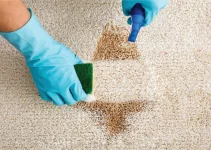Pelvic floor training might not sound like the most exciting thing to add to your routine, but it’s absolutely vital for many aspects of your health—especially if you’re dealing with stress urinary incontinence (SUI). In this article, we’ll break down everything you need to know about pelvic floor health, from basic exercises to advanced techniques like Biofeedback EMG, Tampon Contrelle, and electrostimulation. Whether you’re new to pelvic floor training or looking to boost your existing routine, we’ve got you covered!
What is the Pelvic Floor?
The pelvic floor refers to a group of muscles that stretch across the pelvis like a hammock, supporting key organs like the bladder, uterus, and bowel. These muscles play a crucial role in controlling urination, supporting pregnancy, and maintaining sexual health.
Why is Pelvic Floor Health Important?
Imagine the pelvic floor as the foundation of a house—when it’s strong, everything else works smoothly. When it weakens, you might experience problems like stress urinary incontinence, lower back pain, or even issues with bowel control. Maintaining a strong pelvic floor can improve your overall well-being, prevent issues before they start, and even boost your confidence.
Understanding Stress Urinary Incontinence (SUI)
Causes of Stress Urinary Incontinence
Stress urinary incontinence happens when physical activity—like coughing, sneezing, or exercising—puts pressure on the bladder, causing urine leakage. It’s often the result of weakened pelvic floor muscles, pregnancy, or surgeries like a hysterectomy.
Impact of Stress Urinary Incontinence on Daily Life
SUI can be incredibly frustrating and embarrassing. It can interfere with daily activities, from playing sports to simply laughing with friends. Fortunately, pelvic floor training can help manage, reduce, or even eliminate these symptoms over time.
The Role of Pelvic Floor Training in Treating SUI
How Pelvic Floor Exercises Help
Pelvic floor exercises, often referred to as Kegels, strengthen the muscles responsible for bladder control. These exercises are simple, discreet, and can be done almost anywhere. When practiced regularly, they help reduce the symptoms of SUI by tightening the muscles that control urination.
Real-Life Benefits of Pelvic Floor Training
In addition to reducing urinary leakage, strengthening the pelvic floor can improve posture, relieve lower back pain, and even enhance sexual pleasure. It’s a small investment of time that pays off in multiple ways.
Advanced Pelvic Floor Training Techniques
While basic exercises are great, sometimes you need a little extra help to make real progress. Here’s where advanced tools like Biofeedback EMG, Tampon Contrelle, and electrostimulation come into play.
Biofeedback EMG: A Smart Approach
Biofeedback EMG is a cutting-edge technique that helps you see how well you’re activating your pelvic floor muscles during exercises.
How Biofeedback EMG Works
Using sensors, Biofeedback EMG monitors the electrical activity in your pelvic muscles, giving you real-time feedback. It’s like having a personal trainer for your pelvic floor, ensuring you’re targeting the right muscles and making your exercises more effective.
Using Tampon Contrelle for Pelvic Floor Support
Another great tool in pelvic floor training is the Tampon Contrelle.
What is Tampon Contrelle?
The Tampon Contrelle is a small, flexible device designed to support the bladder and prevent urine leakage during physical activities.
Benefits of Tampon Contrelle
By providing extra support, Tampon Contrelle allows you to continue living an active life without worrying about accidents. It’s discreet, easy to use, and can be worn comfortably throughout the day.
Electrostimulation for Pelvic Floor Strengthening
Electrostimulation uses electrical impulses to contract and relax the pelvic muscles, giving them a workout without much effort on your part.
How Electrostimulation Helps
If you’re struggling to activate your pelvic muscles on your own, electrostimulation can assist by stimulating the muscles for you. This method is often used for rehabilitation or in cases where traditional exercises aren’t enough to produce results.
How to Get Started with Pelvic Floor Training
Finding the Right Training Tools
With so many options available, from Biofeedback EMG to electrostimulation devices, it’s important to choose the right tools for your needs. You can start with basic exercises or consult with a pelvic health specialist to find out if advanced methods might be better for your situation.
Creating a Consistent Routine
Consistency is key! Whether you’re using advanced tools or just doing basic Kegels, creating a daily or weekly routine will help you achieve the best results. Even 10 minutes a day can make a big difference.
When to Seek Professional Help
Signs You May Need More Than Just Exercises
If you’ve been doing pelvic floor exercises for a few months and aren’t seeing improvement, it might be time to seek professional help. Persistent symptoms like frequent urine leakage, pain, or pelvic discomfort could indicate a more serious issue.
Working with a Pelvic Health Specialist
A pelvic health specialist can assess your condition, recommend advanced treatments, and guide you through more personalized pelvic floor exercises. They may even suggest incorporating tools like Biofeedback EMG or electrostimulation into your routine.
Conclusion
Unlocking the power of pelvic floor training can be life-changing, especially if you’re dealing with stress urinary incontinence. From simple exercises to advanced techniques like Biofeedback EMG and Tampon Contrelle, there’s a solution out there for everyone. The key is to start now and stay consistent. With the right approach, you’ll strengthen your pelvic floor muscles, regain control, and live your life with more confidence.



